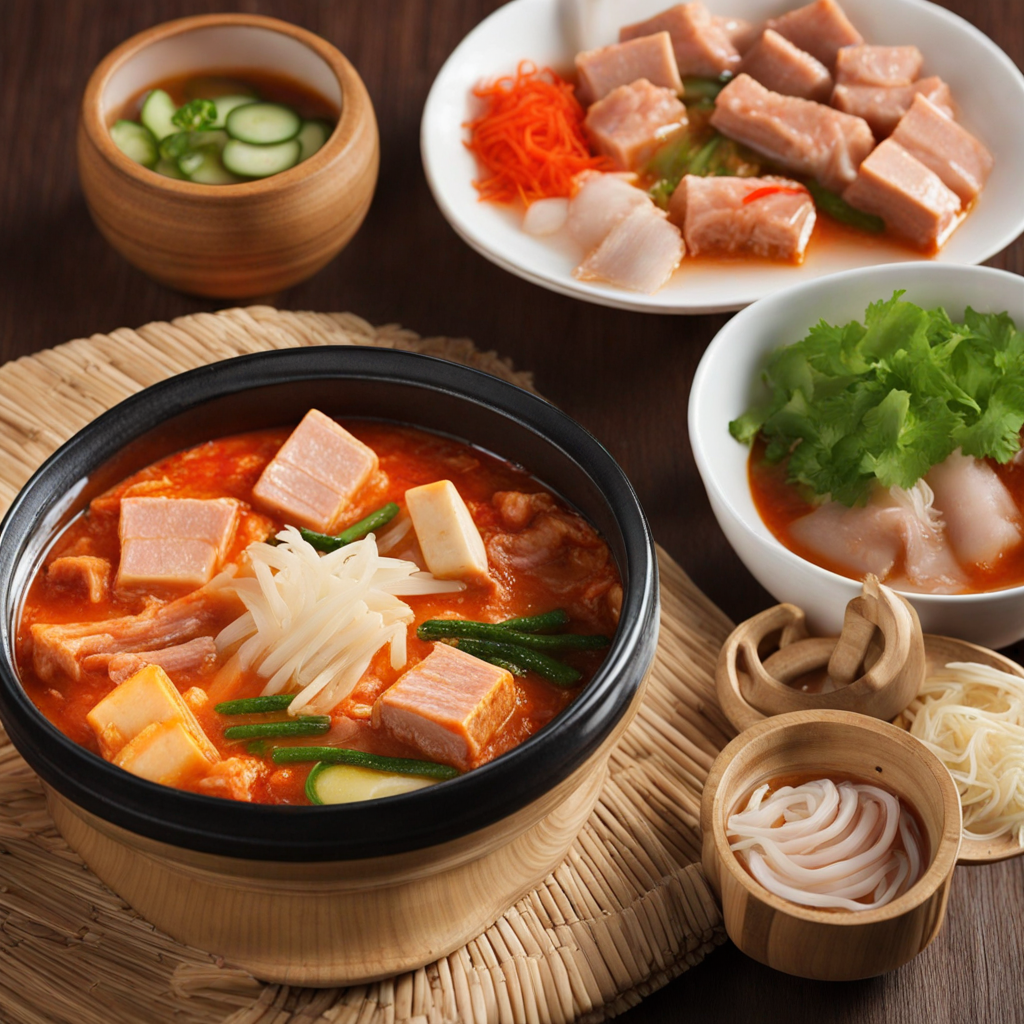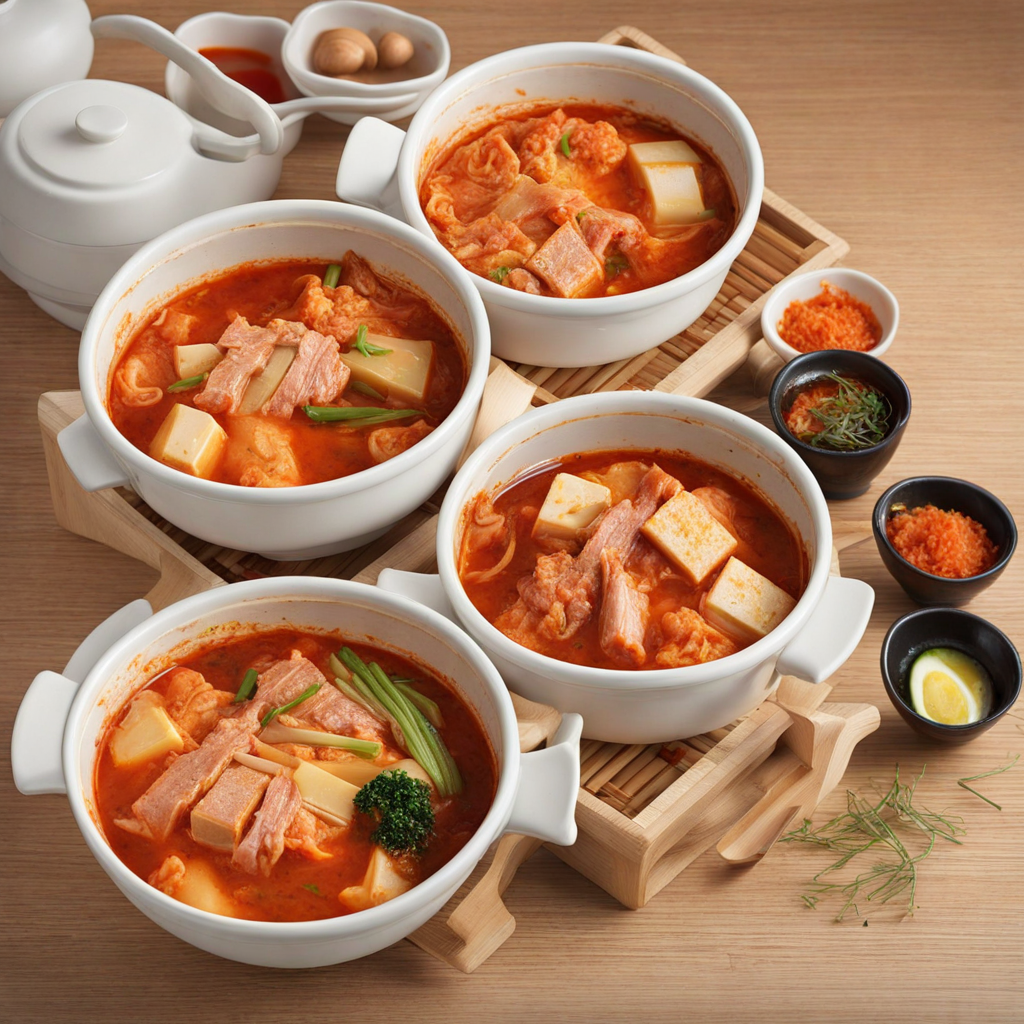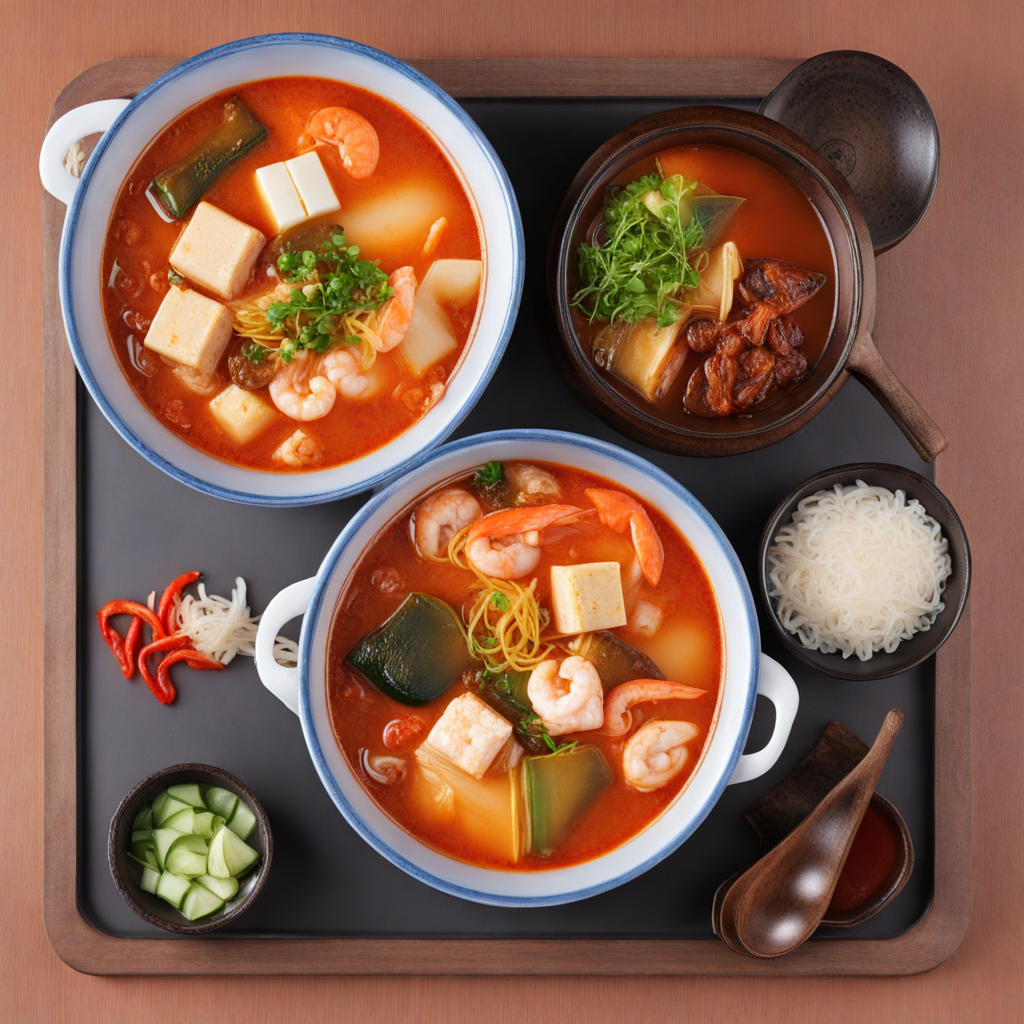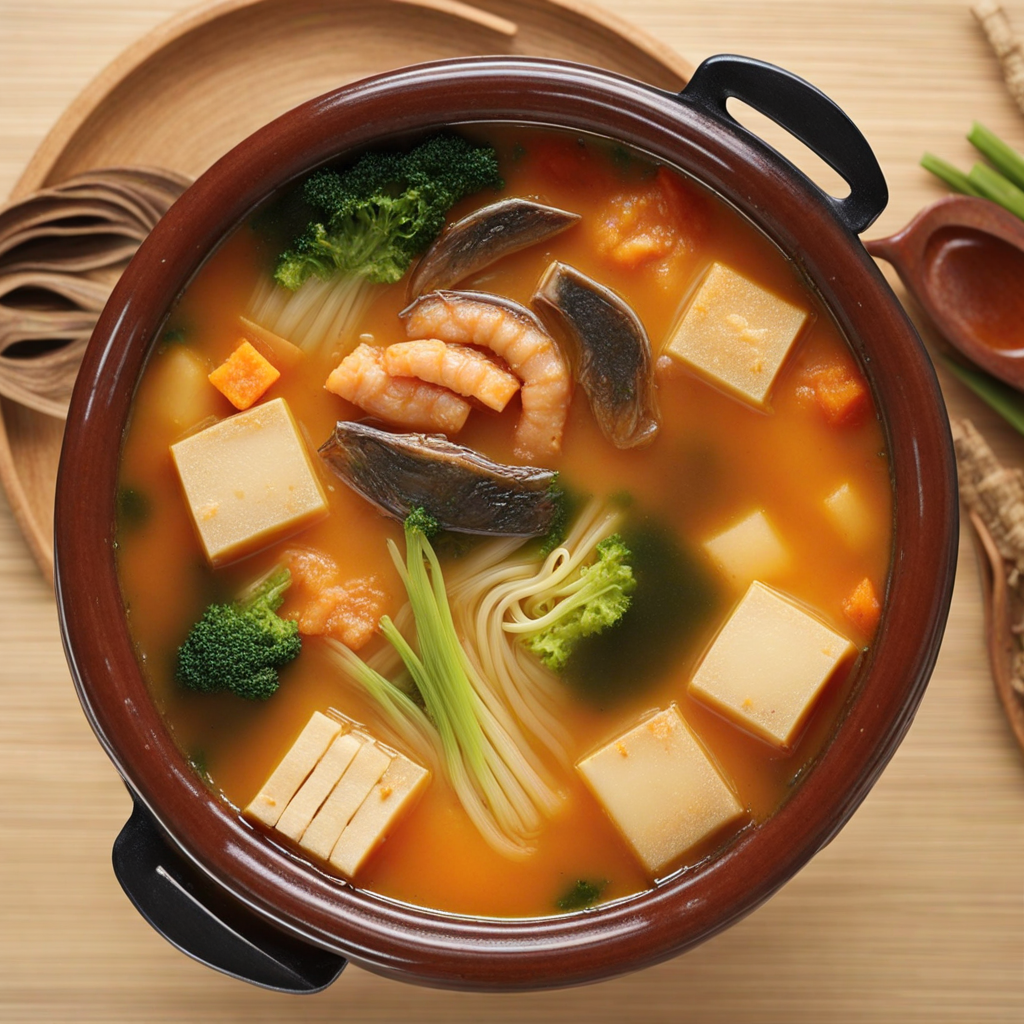Kimchi Jjigae
Kimchi Jjigae is a beloved Korean stew that showcases the bold and vibrant flavors of fermented kimchi, making it a staple in South Korean cuisine. The dish typically features a base of rich, spicy broth infused with gochugaru (Korean red pepper flakes) and gochujang (red pepper paste), giving it a deep, reddish hue and a delightful heat that warms the soul. As the kimchi simmers, it releases its tangy and umami-rich flavors, which meld beautifully with the broth, creating a harmonious balance of spice, sourness, and depth. In addition to kimchi, the stew often includes a variety of ingredients such as tofu, pork (or beef), and an assortment of vegetables like zucchini and scallions. The inclusion of protein and veggies adds texture and nutritional value, making Kimchi Jjigae a hearty and satisfying meal. The tofu absorbs the flavorful broth, while the meat adds a savory richness that complements the tangy kimchi. Each ingredient contributes to the overall complexity of the dish, making every spoonful a new experience. Kimchi Jjigae is often enjoyed with a bowl of steamed rice, which helps to balance the spiciness and acidity of the stew. This comforting dish is perfect for sharing, bringing friends and family together around the table, especially during colder months. With its unique combination of flavors and satisfying nature, Kimchi Jjigae is not just a meal; it is an expression of Korean culture and culinary tradition that invites you to explore the delightful world of Korean flavors.
How It Became This Dish
Origins of 김치찌개 김치찌개, or kimchi stew, is a celebrated dish deeply rooted in Korean culinary tradition. Its origin can be traced back to the early Joseon Dynasty (1392-1910), when the fermentation of vegetables, particularly napa cabbage, became a common practice. The process of preserving vegetables through fermentation was not only a method of food storage but also a response to the harsh winters that made fresh produce scarce. The earliest forms of kimchi were relatively simple, consisting primarily of salted vegetables, but over time, various spices and ingredients were introduced, leading to the development of the diverse kimchi varieties we recognize today. As fermented vegetables became a staple in Korean households, they naturally found their way into soups and stews. The first recorded instances of kimchi stew are believed to have appeared in the late 19th century, during a time when Korea was experiencing significant cultural shifts due to both domestic changes and foreign influence. The combination of kimchi with other ingredients like meat (often pork or tuna), tofu, and various seasonings created a hearty dish that not only provided nourishment but also comfort. Cultural Significance Kimchi stew is more than just a dish; it is a cultural symbol of Korean identity and resilience. In many Korean households, 김치찌개 is often considered a "comfort food," evoking memories of family gatherings and shared meals. It is typically served as a communal dish, encouraging diners to share and enjoy the experience together. The act of cooking 김치찌개 often involves collaboration among family members, reinforcing bonds and traditions that have been passed down through generations. Moreover, the dish exemplifies the Korean philosophy of balancing flavors and nutrition. The sharp tang of fermented kimchi, combined with the umami richness from meat and the freshness of other ingredients, creates a harmonious blend. This balance reflects the Korean value of health and wellness, as the fermentation process not only enhances the flavor but also provides probiotics that are beneficial for digestion and overall well-being. Ingredients and Regional Variations The basic components of 김치찌개 include kimchi, a protein source (commonly pork or tofu), and a broth, often seasoned with gochugaru (Korean red pepper flakes) and other aromatics. However, the dish can vary significantly based on regional ingredients and personal preferences. In the coastal regions, seafood such as clams and fish are commonly used, while in the mountainous areas, wild herbs and mushrooms may be incorporated. Banchan, or side dishes, commonly accompany 김치찌개, enhancing the meal's flavor profile and nutritional value. The variety of side dishes served can vary greatly from household to household, reflecting local customs and available ingredients. This adaptability is a hallmark of Korean cuisine, where many dishes are designed to accommodate seasonal changes and regional availability. Modern Adaptations With globalization and the increasing popularity of Korean cuisine worldwide, 김치찌개 has undergone several modern adaptations. Restaurants and chefs have begun to experiment with traditional recipes, incorporating international ingredients and techniques, leading to innovative versions of the classic stew. For instance, some variations include the use of cheese, which melts into the stew, creating a creamy texture that contrasts with the spiciness of the kimchi. Furthermore, the rise of health-conscious eating has led to the creation of lighter versions of 김치찌개, where low-sodium broth and organic ingredients are favored. These adaptations cater to a broader audience while preserving the essence of the dish. Additionally, the growing interest in vegan and vegetarian diets has prompted chefs to create plant-based versions of 김치찌개 that utilize vegetable broth and various plant proteins, thus broadening its appeal beyond traditional meat-based recipes. Global Recognition The global recognition of Korean cuisine has significantly impacted the popularity of 김치찌개. As Korean pop culture, especially K-dramas and K-pop, continues to gain traction worldwide, so too does the interest in Korean food. Many international diners are now familiar with the dish, and it often features prominently on the menus of Korean restaurants outside of South Korea. In addition to restaurants, the rise of social media has played a crucial role in promoting traditional Korean dishes like 김치찌개. Food bloggers and influencers showcase their cooking processes and variations, encouraging others to try making the dish at home. This digital sharing of recipes helps maintain the traditional aspects of the dish while also allowing for creative freedoms that reflect contemporary tastes. Conclusion: A Dish of Resilience and Comfort 김치찌개 stands as a testament to the rich culinary heritage of Korea. It embodies the principles of resourcefulness and adaptability that have defined Korean cuisine over the centuries. As a dish that can be both simple and intricate, it reflects the changing dynamics of Korean society while remaining a cherished staple in homes across the nation. Today, whether enjoyed in a bustling restaurant in Seoul or made at home in a foreign land, 김치찌개 continues to offer warmth and comfort, reminding us of the cultural connections that food can foster. As we explore the history and significance of this beloved stew, we gain insight into not just its ingredients and flavors, but also the enduring spirit of the Korean people. The evolution of 김치찌개 illustrates how traditional foods can adapt and thrive in a modern world, bridging generations and cultures through the universal language of food.
You may like
Discover local flavors from South Korea







